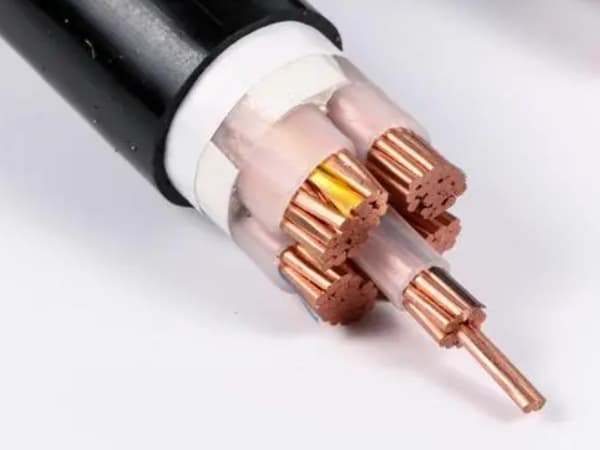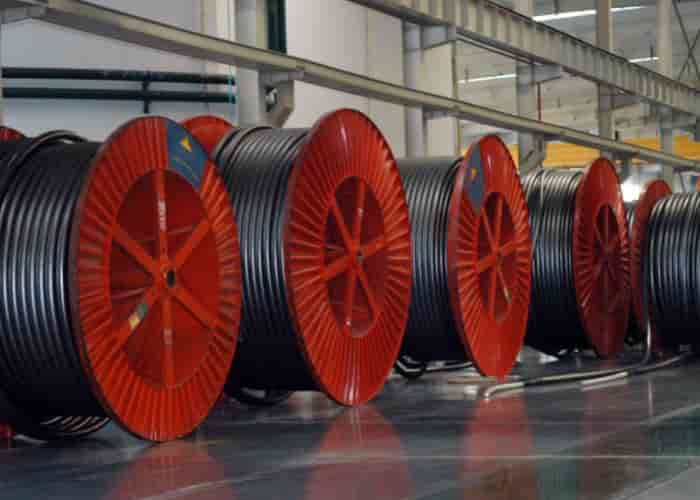
Direct current cable in the ever-evolving landscape of energy transmission and distribution, it have emerged as a vital component, reshaping the way we harness and distribute electricity. From solar panel installations to high-voltage power grids, DC cables play a pivotal role in ensuring efficient and reliable energy flow. As an expert in the field, I’ll guide you through the intricacies of DC cables, highlighting their types, sizing calculations, and their unique advantages over alternating current (AC) cables, particularly in the context of solar energy systems and high-voltage applications.
Direct Current Cables,DC Cable
Direct current Cable DC cable transmit electrical energy in a unidirectional flow, as opposed to alternating current (AC) which reverses direction periodically. This fundamental difference gives DC cables distinct advantages in certain applications, particularly those requiring long-distance, high-capacity power transmission or in systems where voltage conversion is minimal or unnecessary.
Types of Direct Current Cable
Direct Current Cable DC cables come in a variety of types, each designed to meet specific requirements based on voltage levels, environmental conditions, and installation constraints.
- Low-Voltage DC Cables: Ideal for applications such as solar panel installations, battery banks, and LED lighting systems, these cables typically operate at voltages below 1000V. They are lightweight, flexible, and often insulated with materials that resist UV radiation and moisture, making them well-suited for outdoor use.
- Medium-Voltage DC Cables: As the name suggests, these cables are designed to handle voltages ranging from 1kV to 35kV. They find application in larger-scale solar farms, wind turbines, and certain industrial settings. Medium-voltage DC cables often feature enhanced insulation and shielding to protect against electrical surges and environmental hazards.
- High-Voltage Direct Current (HVDC) Cables: Representing the pinnacle of DC transmission technology, HVDC cables can carry voltages exceeding 35kV, making them indispensable for long-distance, high-capacity power grids. HVDC cables utilize advanced insulation materials, robust conductors, and sophisticated cooling systems to ensure safe and efficient operation under extreme conditions.
Direct Current Cable Size Calculator: Ensuring Optimal Performance
Choosing the right Direct Current Cable DC cable size is crucial to ensure both safety and efficiency. An oversized cable can lead to unnecessary costs, while an undersized one may overheat, causing damage to the cable and potentially the entire system. That’s where a direct current cable size calculator comes in handy.
These calculators take into account various factors, including the current carrying capacity (ampacity), voltage drop, and the ambient temperature of the installation site. By inputting the specific requirements of your system, the calculator can provide a recommended cable size that balances cost, safety, and performance.

DC Cables for Solar: A Perfect Match
Solar energy systems are inherently DC-based, as photovoltaic cells generate direct current. As such, DC cables are the natural choice for connecting solar panels to batteries, inverters, and other components within the system.
- Efficiency Boost: By minimizing the need for DC-to-AC conversion (and vice versa), DC cables help preserve the energy generated by solar panels, maximizing overall system efficiency.
- Cost Savings: In larger-scale solar installations, the use of DC cables can significantly reduce the cost of cabling infrastructure, as fewer converters and transformers are required.
- Simplicity: DC systems tend to be simpler and easier to maintain than AC systems, especially in remote or off-grid applications.
High Voltage Direct Current Cable: Revolutionizing Long-Distance Transmission
HVDC cables have revolutionized the way we transmit electricity over long distances. Unlike AC, DC does not suffer from the capacitive and inductive losses associated with transmission over long lines. This allows HVDC cables to transmit electricity with minimal energy loss, even over thousands of kilometers.
- Loss Reduction: By minimizing transmission losses, HVDC cables enable the efficient transportation of vast amounts of electricity from remote generation sources to densely populated urban areas.
- Environmental Impact: Reduced energy loss translates into lower carbon emissions, making HVDC cables an environmentally friendly option for power transmission.
- Flexibility: HVDC cables can be used to interconnect asynchronous power grids, enabling the exchange of electricity between regions with different frequency standards.
AC/DC Cable Comparison: Where Each Shines
While DC cables excel in certain applications, AC cables remain the standard in many other contexts. AC’s ability to be easily transformed and distributed at different voltage levels makes it ideal for powering homes, offices, and industrial facilities. However, as technology advances and the need for long-distance, high-capacity power transmission grows, the importance of DC cables cannot be overstated.
In conclusion, direct current cables are a vital component of modern energy transmission and distribution systems. From low-voltage applications in solar installations to high-voltage HVDC grids spanning continents, DC cables offer unique advantages that make them indispensable in today’s energy landscape. By leveraging the power of a direct current cable size calculator and understanding the various types and benefits of DC cables, you can ensure that your energy systems are optimized for safety, efficiency, and cost-effectiveness.
